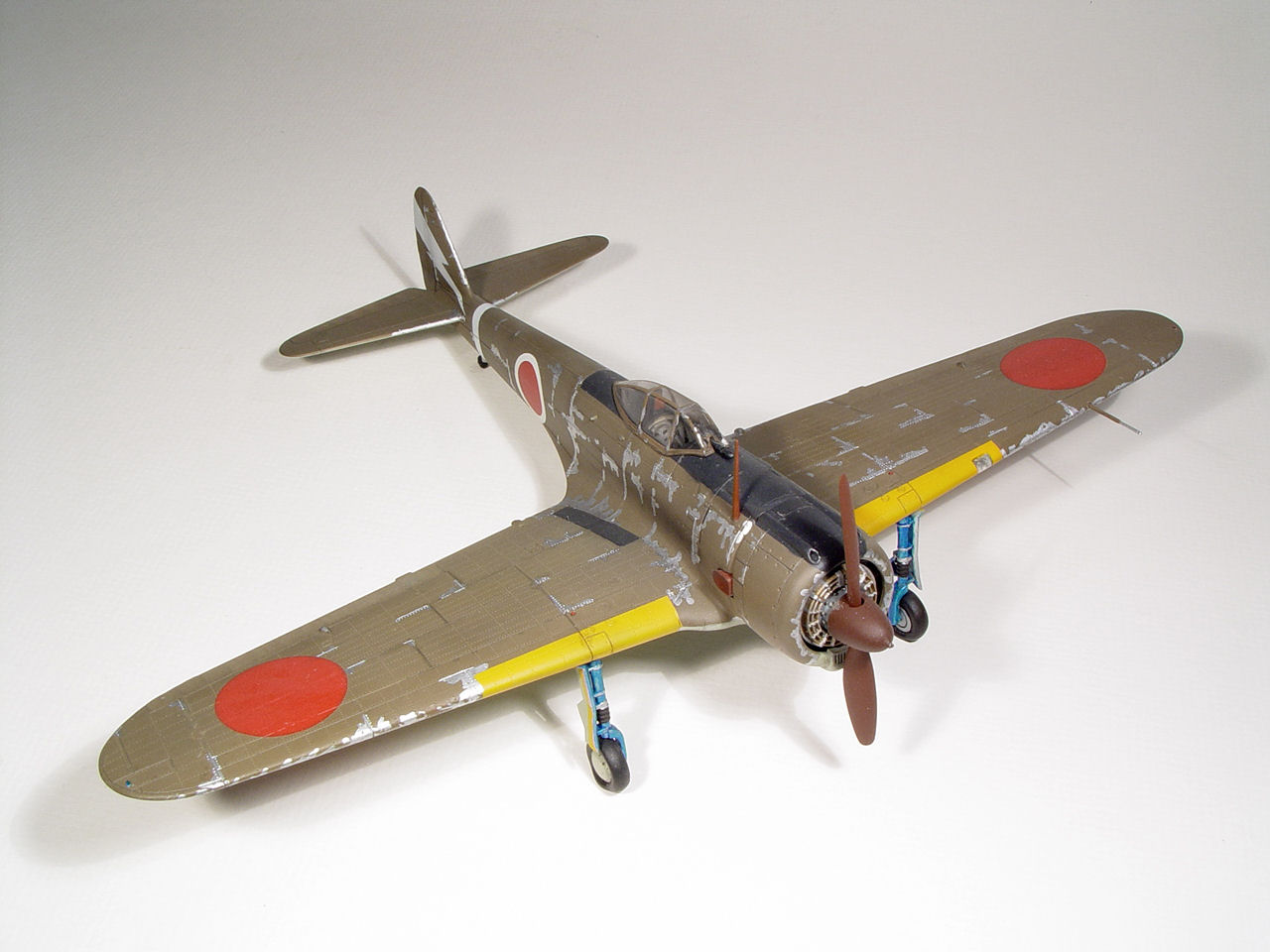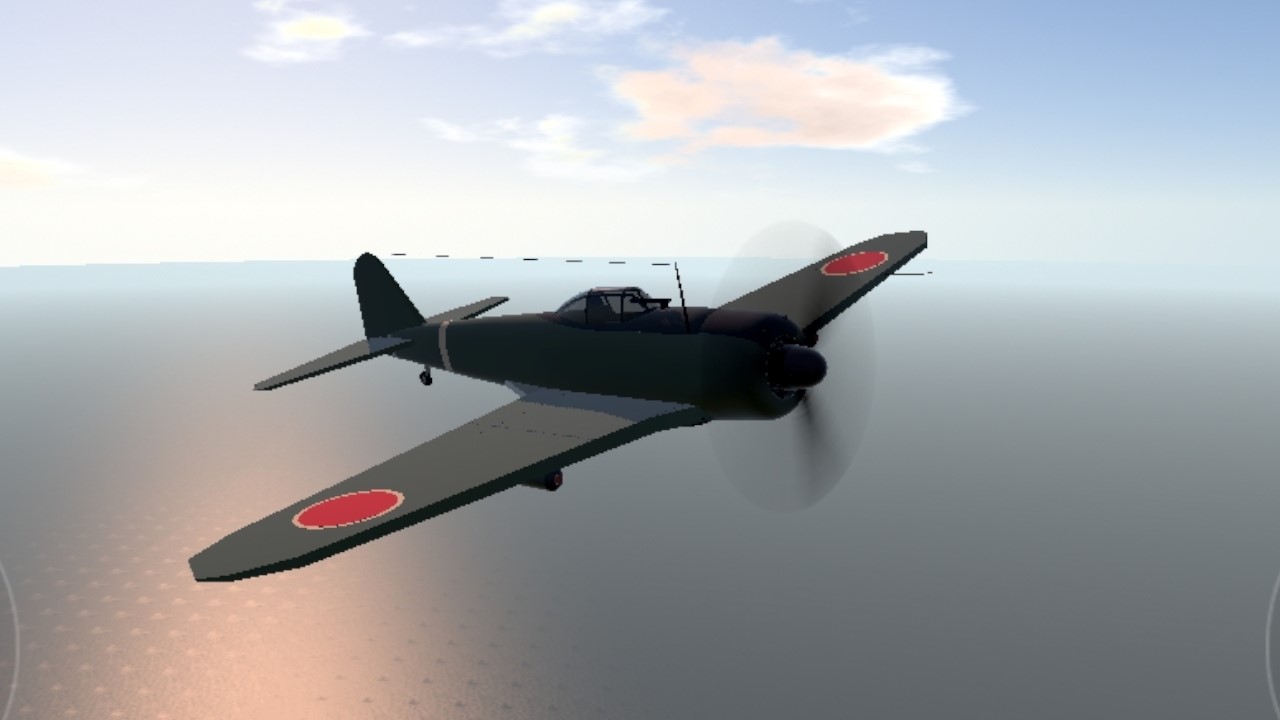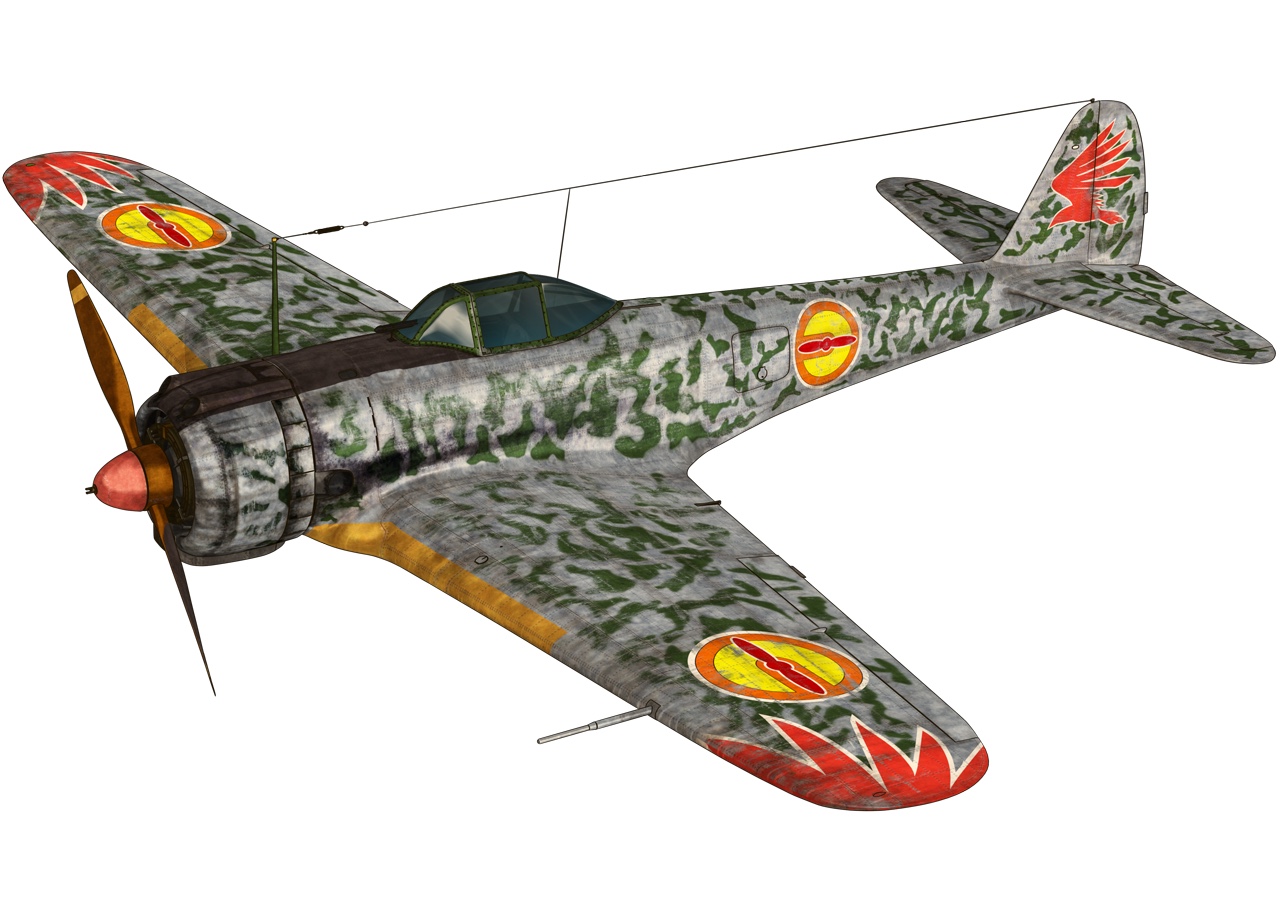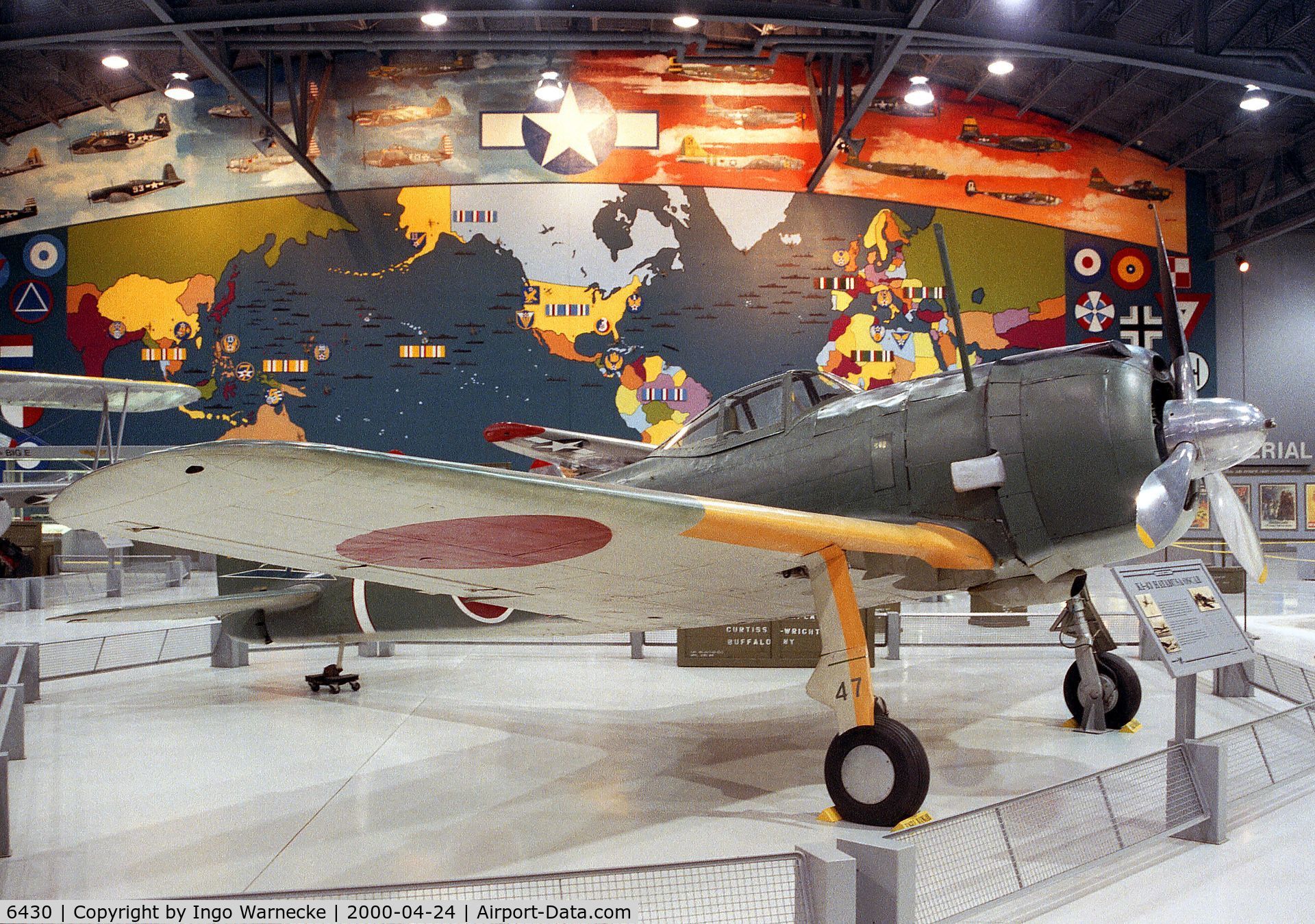Hayabusa Aircraft - The Nakajima Ki-43, or the Hayabusa, was a tactical Japanese fighter plane designed by Hideo Itokawa. The single-engine fight was sanctioned in October of 1941, roughly two years after the first flight in January of 1939 was successful.
The Hayabusa was designed to be subtle, which explains why it had a much lighter build. As a result, well over 48 different fighter plane models were developed in just under a decade, some of which were abandoned as prototypes.
Hayabusa Aircraft

Below are eight of the most famous Japanese fighter planes of WW2 that dominated the World War II Era: Only about 750 of the original Series/Mark 1 long winged aircraft were built. The Series 2 was most common, built by Tachikawa and Nakajima, with oval air intake atop the cowl and slightly shorter wing, cleaner canopy, and the final Series/Mark 3 (never 'Type'3, that's a Tony) with water meth filler
in the canopy and rectangular intake. The Alpine Fighter Collection in the New Zealand Fighter Pilot's Museum had the world's only Oscar in flying condition. It was one of the last Series 1s built, number 750 or so.
The aircraft left the Alpine Fighter Collection in late 1999. The aircraft was sold to an undisclosed buyer, and exported from New Zealand. The Mitsubishi J8M1 was a joint project between the Imperial Japanese Navy Air Service (JNAF) and the Imperial Japanese Army Air Service (JAAF).
The glider had an engine that closely resembled the Walter HWK 509A save for a few modifications. Another impressive feature of the Mitsubishi J8M1 was its light frame. In total, the aircraft only weighed 400 kilograms, meaning it could carry out the missions with incredible stealth.
The Ki-84 had an upgraded armor, which made up for the weakness the K-83 had shown. The cantilever low-wing monoplane's frame was all metal. The latter ensured that the pilot was safe and secure. The fighter was also flanked with two additional 12.5 mm machine guns.
The plane also had a 65 mm armor glass canopy for the pilot's protection. The main spar of this futuristic glider was fashioned out of plywood, which contributed to the drastic reduction of the total weight of the tremendous J8M1 plane.

The vertical tail was also fashioned out of wood for the very same reasons. The bulletproof glass in the cockpit was also allocated. This was done in a bid to reduce the weight of the Mitsubishi J8M1 further.
It was a time when a single, seemingly insignificant invention was enough to change the tide of the war as every country in the fight was evenly matched. Japan was among the countries regarded as the best of the best when it came to technological advancement, together with Germany.
They not only had the expertise but also had the human resources to design, develop, and use their new-age weaponry. The first touchdown - which happened in February - included firing a "bullet" into the rocky surface to kick up rock samples, which were then caught by the sampler horn that extends from the bottom of the spacecraft.
The Kawasaki Ki-61 was primarily used by the Imperial Japanese Air Service between 1942 and 1945. Takeo Doi designed the Ki-61 under the aegis of Kawasaki Kokuki Kogyo K.K. Company. The Hien came as an improvement for the Kawasaki Ki-60, which reportedly had a few issues.
Also, the lack of rudder rendering may have contributed to the A6M's long-range fighter's short run. The Zero was officially retired in 1945 when World War II came to a close. By that time, Mitsubishi Aircraft Company had already built 10,939 A6M long-range fighter aircraft.
The A6M was mostly used by the Imperial Japanese Navy Air Service between 1940 and 1945. Designed by Jiro Horikoshi, who is also credited with the design of the A6M Zero, the Mitsubishi J2M absolutely no issue conquering the great attitude.
The J2M's frame was sleek, streamlined, and sturdy, which made gliding and maneuvering through the air at high speeds feel like child's play. This explains why the Mitsubishi J2M was mostly used as a local-defense interceptor fighter plane by the Japanese in the second world war.

While asteroids are some of the oldest objects in space, Ryugu belongs to a particularly primitive type of space rock, and may contain clues about the conditions and chemistry of the early days of the Solar System - some 4.5 billion years ago.
The A6M is yet another brainchild of the well-regarded Mitsubishi Aircraft Company. Introduced in 1st July 1940, the Type 0 Carrier Fighter was heralded as the best of its kind when it officially made its debut on the war front.
Thanks to its scrupulous frame complete with streamlined features, the Zero could maneuver with both ease and grace, making it hard for the allied forces to shoot it down. The Nakajima J1N1, also known as the Gekko, was famous for its efficiency during the kamikaze as well as night fighting missions.
The latter was because of its sleek design. The fact that a couple of superior machineguns flanked the Gekko may have also played a role. One of these machine guns was a 20 mm type 99 cannon.
The rest were six 7.7 mm type aircraft machineguns. Four of the massive 7.7 mm type aircraft machineguns were mounted at the rear of the aircraft, which made the Gekko a little sluggish during the missions.
The sluggishness compelled the development of the newer model, the J1N1-C, or the Navy Type 2 Reconnaissance Plane as the navy fondly referred to the new and improved model. The yearlong return journey is much shorter than the three and a half years it took the spacecraft to reach Ryugu, thanks to the asteroid now being much closer to Earth than it was in 2014.
Researchers from around Japan, and other countries, will be working with the samples. In the UK, Prof Russell's team at the Natural History Museum and scientists from the universities of Manchester and Glasgow will get to study the material.

Addressing journalists, he acknowledged past missions that had experienced technical problems, but said: "Regarding Hayabusa-2, we did everything according to the schedule - 100%. And we succeeded in sample return as planned. As a result, we can move on
to the next stage in space development." Satoru Nakazawa, Hayabusa-2 sub-manager at the Japan Aerospace Exploration Agency (Jaxa), who was part of the operation at Woomera, described the search: "We went there with the helicopter and it was emitting the beacon signal. But at that
time, it was still dark, so it was unclear [where it was]. I was very, very nervous. It had long been thought that comets delivered much of the Earth's water in the early days of the Solar System.
Alan Fitzsimmons said the chemical profile of water in comets was sometimes rather different from the profile of water in our planet's oceans. The Hayate was fitted with a 35.8-liter displacement, Ha-45 Homare air-cooled 18-cylinder radial engine.
Before its official retirement in August of 1945, Nakajima Aircraft Company had manufactured about 3,514 Nakajima Ki-84s. The Imperial Japanese Army Air Service was the primary user of this craft. The Nakajima Ki-84 variant was the Nakajima Ki-116.
"Having samples from an asteroid like Ryugu will be really exciting for our field. We think Ryugu is made up of super-ancient rocks that will tell us how the Solar System formed," Prof Sara Russell, leader of the planetary materials group at London's
Natural History Museum, told BBC News. The craft packed a robust Mitsubishi Kasei Engine hidden behind a long cowling. A skillfully designed fan was connected to a propeller with an extension shaft. This made the cooling of the powerful engine quite effortless.

The J2M4 model 34 was the next version of the J2M to be developed. Introduced in 1944, the J2M4 model 34 came with an improved 1,420 horsepower Kasei 23c turbo supercharger engine. Its no wonder the Zero was quick to achieve its impressive pre-1942 twelve to one kill ratio.
Unfortunately for the A6M, the allied forces were ready to adapt, coming up with better technology that toppled the Zero, putting an end to its two-year reign. In addition to that, the fact that the A6M lacked hydraulic flaps resulted in a plethora of maneuvering issues, especially when flying at high speeds.
The designers also designed the aircraft to carry less fuel as well as ammunition. Only seven Mitsubishi J8M1s were built between 1944 and 1945 before the project was officially retired. However, there were at least 60 training versions of the J8M1, including the MXY-9, MXY-8, Ku-13, and Ki-13.
Maeda, Yokosuka, and Yokoi developed these training versions. The IJA Air Service primarily used this remarkably fierce interceptor. The second touchdown happened in July, after the Hayabusa-2 first "bombed" the asteroid to create an artificial crater.
Later, it returned to land in the crater and collected the fresh rubble, including rock samples from beneath the surface. Known to very few, the Second World War was more than a few Super Powers at loggerheads.
It was more of the most powerful countries showcasing their military advancements on a worldwide stage in the hopes of being crowned as the country with the best, most advanced ordnance. "It may be that we've been looking to comets all this time for delivering water to Earth in the early Solar System. Perhaps we should have been looking a bit closer to home, at these primitive but rather rocky asteroids," Prof Fitzsimmons told
BBC News. The capsule was then taken to a "quick-look facility" for inspection. On Monday, Jaxa said it had collected gases from inside the container for analysis, adding that it was still not known whether they came from the Ryugu sample.

Apart from being good at performing butterfly maneuvers, the Hayabusa also came retrofitted with the brand-new Nakajima Ha-25 engine complete with a two-blade propeller. This remarkable single-engine could crank enough horsepower to propel the Nakajima Ki-43 to speeds of up to 495 km/h, making the land-based light aircraft even more deadly.
At around 18:07 GMT (04:37 local time), the recovery team identified the position of the capsule on the ground. A helicopter, equipped with an antenna to pick up the beacon, took to the air shortly afterwards.
The latter was a visible correction after the army officials had declined an earlier prototype with retractable landing gear, terming it as too complicated for warfare. The Army Type 97 Fighter's body was streamlined with the trailing edge tapered.
It also had straight wings with leading edges, which later became the fighter aircraft's trademark. The Hayate was first introduced into the war front in November of 1944, a year before WWII came to an official close.
This fighter plane was built for speed, which made it easy to maneuver when under heavy fire. The army type 4 fighter was flanked with four machine guns: two 20 mm cannons and two 30 mm cannons.
This Japanese fighter plane had a robust metallic frame, which meant it was meant for defending at low to medium altitudes. The fighter plane had a semi-monocoque fuselage, fabric-covered ailerons, and three-spar wings. The rudders and elevators were also covered with fabric.
The Hien only had a single seat for the pilot. "We flew over the area [where it landed] many times and I thought maybe that was where it was. Then the Sun rose and we could visually confirm the existence of the capsule. We thought: 'Wow, we found it!'
hayabusa satellite, hayabusa spacecraft, ki 43 hayabusa, hayabusa probe, hayabusa 2 asteroid mission, hayabusa asteroid, hayabusa 1, hayabusa plane
0 Comments